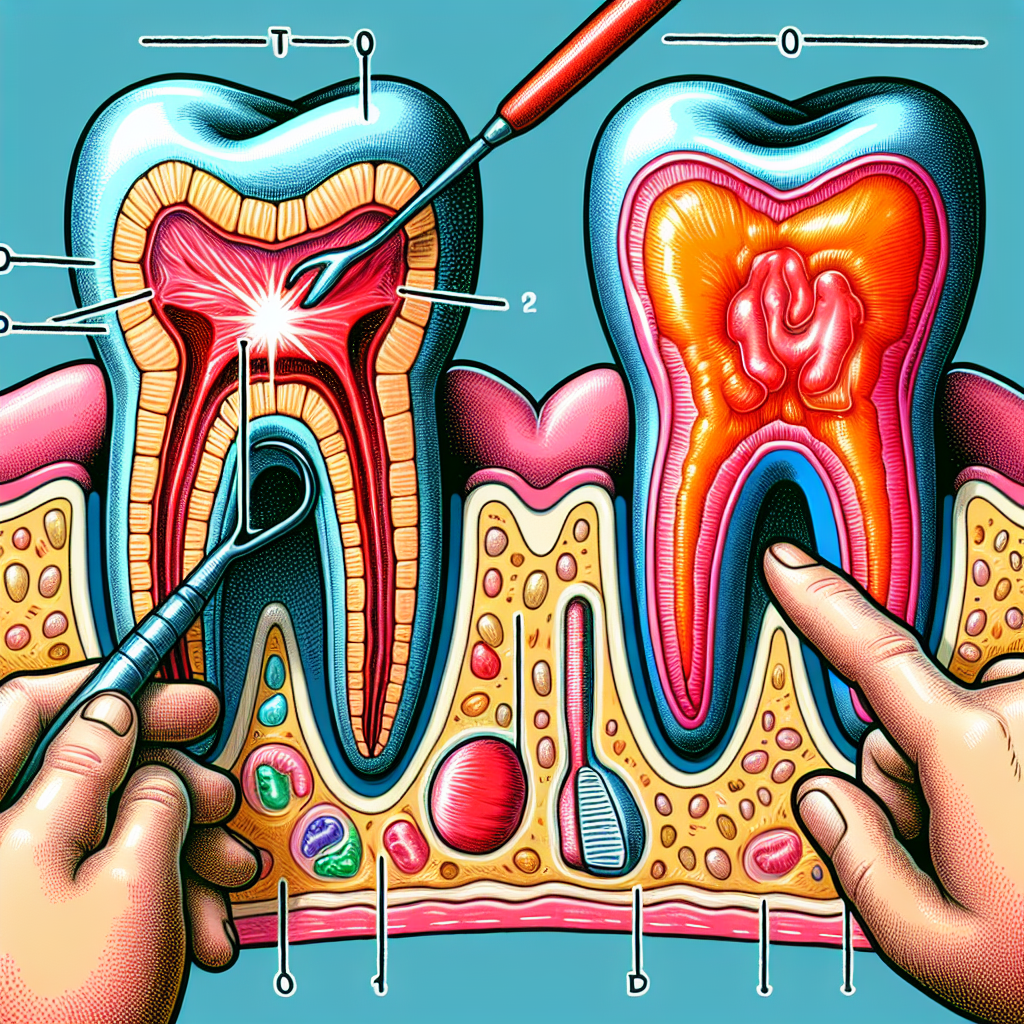Introduction
Dealing with dental issues can be painful and confusing. One common dental problem that many people encounter is an abscess. However, it’s important to understand that there are different types of abscesses that can occur in the mouth. In this article, we will discuss how to tell the difference between a tooth abscess and a gum abscess, as well as the causes, treatment options, and prevention tips for these conditions.
Table of Contents
- Introduction
- What is a Tooth Abscess?
- Symptoms of a Tooth Abscess
- Causes of a Tooth Abscess
- Treatment for a Tooth Abscess
- Prevention Tips for Tooth Abscess
- What is a Gum Abscess?
- Symptoms of a Gum Abscess
- Causes of a Gum Abscess
- Treatment for a Gum Abscess
- Prevention Tips for Gum Abscess
- FAQs
- Conclusion
What is a Tooth Abscess?
A tooth abscess is a pocket of pus that forms within the tooth. It is usually caused by a bacterial infection that originates from tooth decay, a cracked tooth, or a failed root canal. The infection spreads to the surrounding tissues and can cause severe pain and swelling.
Symptoms of a Tooth Abscess
- Persistent and severe toothache
- Sensitivity to hot and cold temperatures
- Swelling of the face or cheek
- Tender or swollen lymph nodes in the neck
- Fever
- Bad breath or a foul taste in the mouth
Causes of a Tooth Abscess
A tooth abscess is usually caused by poor dental hygiene, which leads to tooth decay. When bacteria invade the tooth, it can cause an infection, leading to the formation of an abscess. Other causes include a cracked tooth, trauma to the tooth, or a failed root canal treatment.
Treatment for a Tooth Abscess
The treatment for a tooth abscess typically involves draining the pus and removing the source of the infection. This may include a root canal procedure or tooth extraction. Antibiotics are often prescribed to clear the infection and prevent its spread to other parts of the body.
Prevention Tips for Tooth Abscess
- Brush your teeth twice a day with fluoride toothpaste
- Floss daily to remove plaque and food particles
- Limit sugary and acidic foods and drinks
- Visit your dentist regularly for check-ups and cleanings
- Get prompt treatment for any dental issues
What is a Gum Abscess?
A gum abscess, also known as a periodontal abscess, is an infection that occurs in the gums. It is usually caused by a buildup of bacteria in the periodontal pockets, which are the spaces between the gums and the teeth. The infection can lead to swelling, pain, and discomfort.
Symptoms of a Gum Abscess
- Swollen, red, or tender gums
- Pain or discomfort when chewing
- Pus or discharge around the gums
- Bad breath or a bad taste in the mouth
- Loose teeth
Causes of a Gum Abscess
A gum abscess is usually caused by poor oral hygiene, which leads to gum disease. When plaque and tartar build up on the teeth, bacteria can multiply and cause an infection. Other causes include a foreign object lodged between the teeth and gums, gum injury, or a compromised immune system.
Treatment for a Gum Abscess
The treatment for a gum abscess typically involves draining the abscess and removing the source of the infection. This may include scaling and root planing, which is a deep cleaning procedure to remove plaque and tartar. In severe cases, surgery may be necessary to remove the infected tissue.
Prevention Tips for Gum Abscess
- Brush your teeth twice a day with a soft-bristle toothbrush
- Use dental floss or interdental brushes to clean between your teeth and gums
- Rinse your mouth with an antimicrobial mouthwash
- Quit smoking or using tobacco products
- Visit your dentist regularly for professional cleanings and check-ups
FAQs
Q: Can a tooth abscess turn into a gum abscess?
A: Yes, a tooth abscess can spread to the gums if left untreated. The infection can travel through the root of the tooth and into the surrounding gum tissues, causing a gum abscess to form.
Q: Can a gum abscess go away on its own?
A: It is unlikely that a gum abscess will go away on its own. It is important to seek treatment from a dentist to prevent the infection from spreading and causing further damage to the gums and teeth.
Q: How can I prevent dental abscesses?
A: To prevent dental abscesses, it is crucial to maintain good oral hygiene practices, such as brushing your teeth twice a day, flossing daily, and visiting your dentist regularly for check-ups and cleanings. It is also important to address any dental issues promptly to prevent them from progressing into abscesses.
Conclusion
Knowing the difference between a tooth abscess and a gum abscess can help you identify the symptoms and seek appropriate treatment. Both conditions require professional dental care to prevent further complications and maintain good oral health. By practicing good oral hygiene and addressing dental issues promptly, you can reduce the risk of developing abscesses and other dental problems. Remember, prevention is always better than cure when it comes to your dental health.




